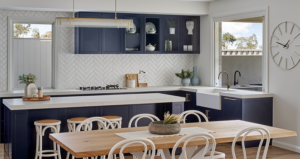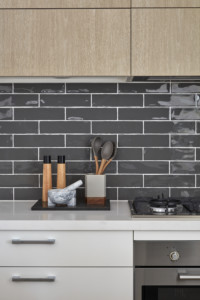Picking the correct tile can quickly turn your bathroom into a luxe hotel-style oasis or your kitchen into an Instagramable delight. But with such an array of tile shapes, colours and patterns on the market, how do you know which tile is right for you and your interior design vision?
Below, our experienced Boutique Interior Designers show you how to incorporate the latest in tile types and laying patterns to create exquisite spaces.
1. Herringbone tiles
What are herringbone tiles?
Herringbone tiles are laid at a diagonal angle across your wall, with each tile placed at a 90-degree angle to the tile next to it. This creates a striking pattern that resembles the bones of a fish or a set of arrows.
What does a herringbone pattern achieve?
Herringbone tiles can make even the most neutral of rooms come alive with character. The secret is in the texture and interest created by the diagonal shapes, especially when used in large patches or small rooms.

Where to use herringbone tiles
In short: powder rooms!
‘Herringbone patterns create a unique sense of drama within smaller spaces, especially when using a smaller tile size,’ explains Boutique Interior Designer, Sarah Young, who has been using herringbone patterns to create dreamy spaces for over eight years.
‘A feature wall behind a vanity in an ensuite or bathroom can also look fantastic.’
Just be careful when considering a herringbone tile for larger spaces, such as your kitchen splashback, as it can quickly become lost in the space. ‘In this case, I’d usually recommend a smaller sized tile across a bigger area, so you can get the full effect of the design,’ advises Sarah.
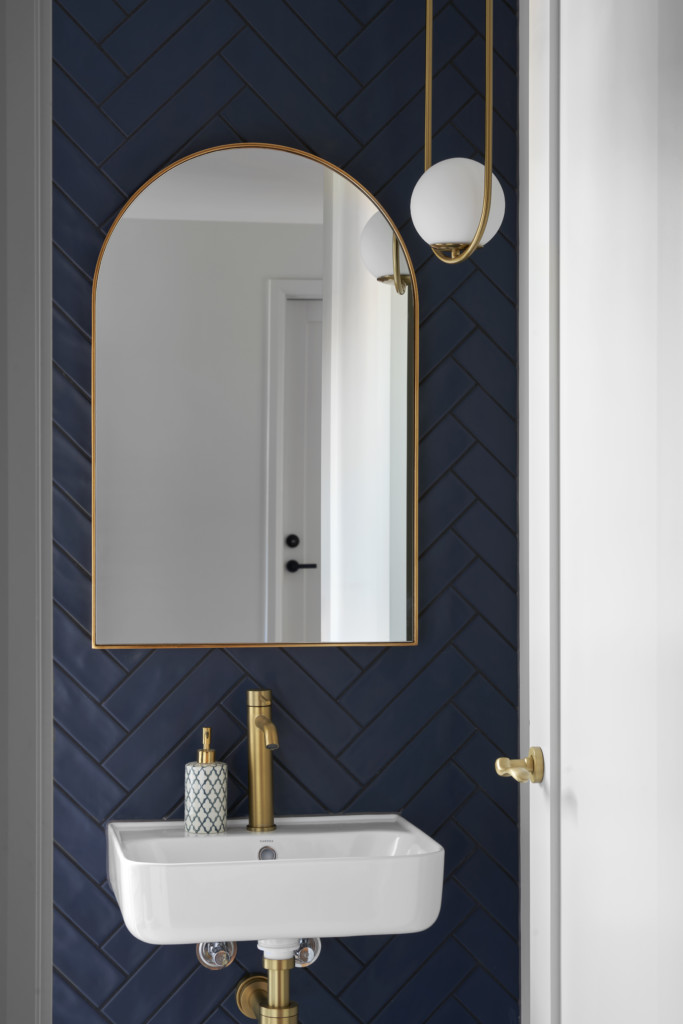
Tips and tricks for using herringbone tiles
Herringbone tiles are trending in both contemporary and more traditional homes. The trick is finding a style of tile that best matches your interior design and the flow of your home.
‘For a Hamptons inspired space, opt for handcrafted designs with uneven edges – Hamptons is all about the little details!’ explains Sarah. ‘For more modern looks, stick to straight edges and matte finishes.’
Looking for stand-out colours to liven up your wet areas? ‘Deep forest greens and terracotta tones are very much on-trend, and can make any bathroom feel warm and cosy,’ suggests Sarah.
2. Subway tiles
What are subway tiles?
Traditionally, subway tiles were rectangular, brick-like and ceramic – like what you would see in the London Underground – and were typically laid horizontally in large swathes. However, today, subway tiles can come in an array of finishes and textures, including matte and gloss.
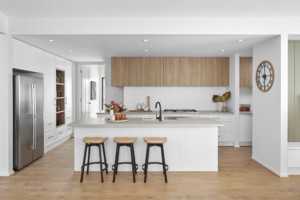
What do subway tiles achieve?
Best suited to minimalist or coastal style homes, subway tiles are all about clean lines and blocks of colour.
‘I’m loving the recent trend of textured subways, as it adds more character to a space, and helps to bring the outside-in,’ says Boutique Interior Designer, Bec Stephens.
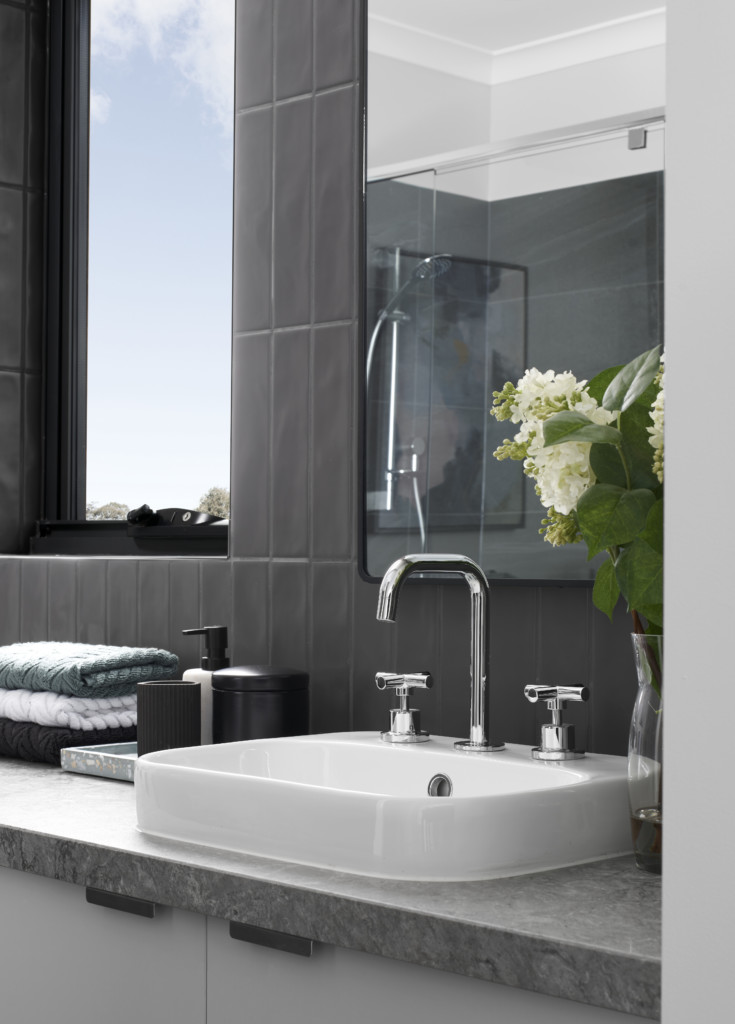
‘I particularly love the impact of a handmade and textured white or cream tile in more traditional interiors, such as a Hamptons style home. For a modern industrial look, consider a black textured subway for something really different!’
Subway tiles can also add a pop of colour to an otherwise neutral palette. ‘Think a slice of blue or green in your kitchen, bathroom or laundry,’ says Bec.
Where to use subway tiles
Subway tiles can have a beautiful impact as a feature wall in a bathroom or ensuite, or to brighten up your kitchen splashback.
‘As they require a bigger tile and more layers, they won’t have the same impact in a smaller room such as a powder room, or if your vanity splashback is too compact,’ says Bec.


Tips and tricks for using subway tiles
Love the idea of a subway tile but prefer your bathroom to stand out from the crowd? Consider laying them vertically! ‘I love using a smaller subway tile on a large-scale bathroom wall, to create length, interest and space,’ suggests Bec.
‘A subway tile laid in a herringbone pattern also produces a beautifully dramatic effect in a kitchen and will stand the test of time.’
3. Mosaic tiles
What is a mosaic tile?
Mosaic tiles are created by arranging smaller pieces of tile into patterns. The design is then arranged on a square mesh-backed tile, making the mosaic easy to install.
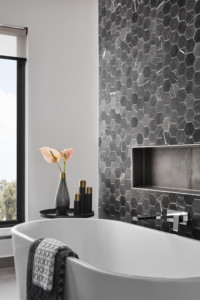
What do mosaic tiles achieve?
‘Mosaic tiles are always a feature of the room and help to create that ‘wow’ factor in the space,’ says Boutique Interior Designer, Nikki Weedon.
‘They are a great way to add interest by introducing a punch of colour, pattern or texture to an otherwise neutral space.’
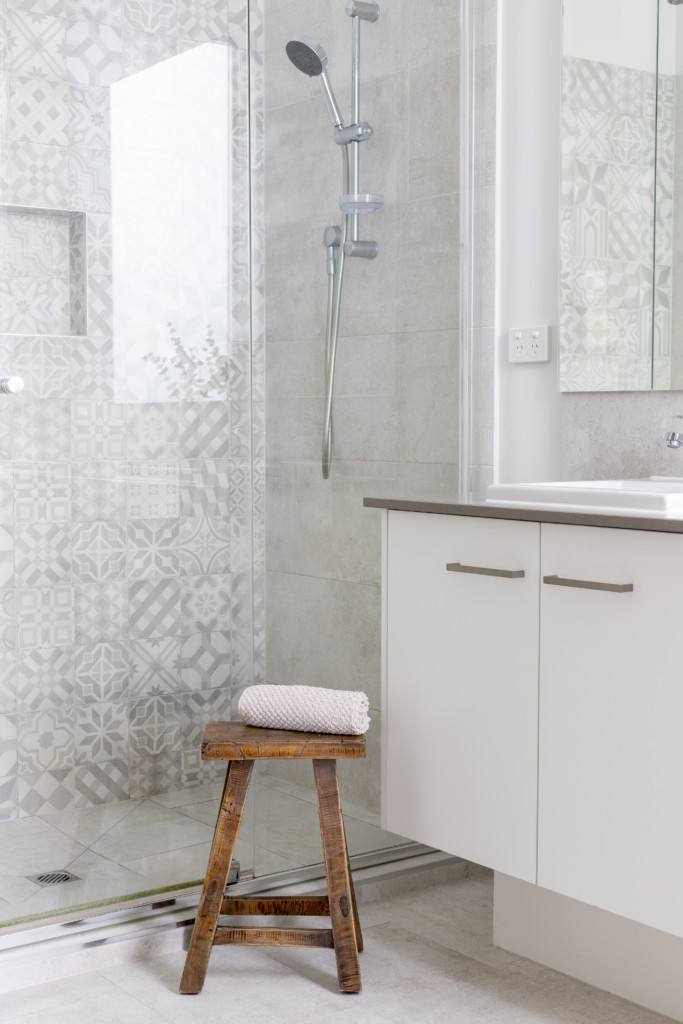
Getting your mosaic right is all about the shape and finish of your tile. Marble or white herringbone mosaics are wonderful in Hamptons inspired interiors, while modern or architectural style homes will suit penny round, hexagon or arrowhead tiles.
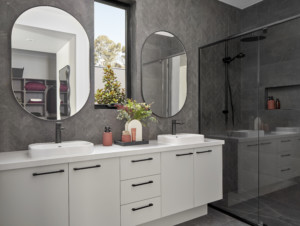
‘For luxe coastal, you can’t go past the beautiful fan mosaics – they really make a statement and, depending on how they are laid, can create two very different looks,’ adds Nikki.
‘Lay them facing up, and they almost look like little hot air balloons; lay them facing down, and you’ll create a more traditional fishtail shape.’
The secret is to let the tile do the talking. Less is more with mosaics, and you can easily make a statement to your wet area without stark contrasts in colour or style.
‘Making sure your mosaic works with your overall colour scheme is vital,’ says Nikki. ‘For example, if you’ve decided on a Hamptons style bathroom, consisting of white walls and a grey tile to the walls and floors, you might choose a white fan mosaic splashback with grey grout. This helps to match the pattern to the surrounding scheme and tie it all together.’
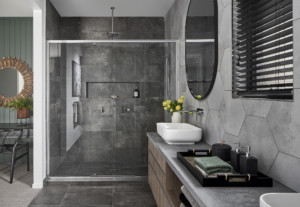
Where to use mosaic tiles
Because of their intricate nature, mosaic tiles are most commonly used in bathrooms. This includes the vanity splashback in your ensuite or powder room, or as a feature wall in your shower.
‘Always think about placing mosaic tiles on the walls your eyes are naturally drawn to or where you will spend the most time looking. Vanity splashbacks are a great example, or on the back feature wall of your shower for a truly luxe feel,’ says Nikki.
‘Mosaic patterns are also very popular as kitchen or laundry splashbacks.’
As for where not to use a mosaic tile? For Nikki, it’s the shower niche. ‘It’s an outdated trend and rarely looks good,’ she says.
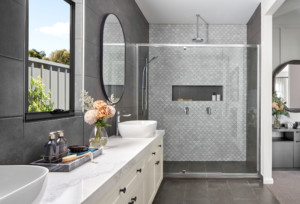
Tips and tricks when creating a mosaic
‘The next best thing in mosaic patterns are Kit Kat tiles,’ says Nikki. ‘As the name suggests, Kit Kat tiles are shaped like the chocolate bar, and can be laid either vertically or horizontally to create subtle texture and colour in a space,’ says Nikki.
‘Kit Kat tiles are already well and truly trending in big architectural homes, and I predict they’ll take off in the Australian volume builder space over the next year.’
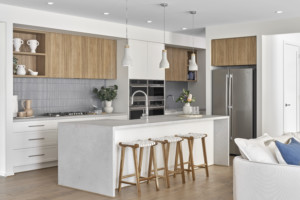
Are you ready to create your dream home?
Boutique Homes’ customers have access to a qualified Interior Designer to step them through the design process. Touch base with one of our friendly New Homes Consultants today to start your home ownership journey.
Have you found ‘The One’?
Share your home journey and connect with the Boutique Instagram community by using #ourboutiquehome
